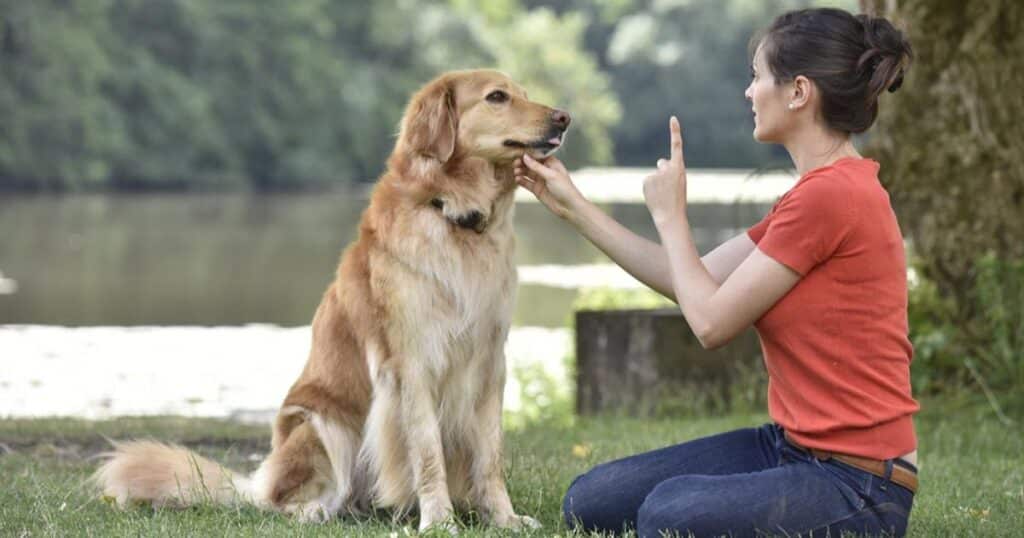Ever caught your furry friend snoozing in an upright position, looking like a fuzzy statue? You’re not alone. Many dog owners have witnessed their pooches dozing off while sitting or even standing, a behavior that’s as puzzling as it is adorable.
In this deep dive into the world of canine sleep patterns, we’ll unravel the mystery behind this peculiar habit and explore the fascinating realm of dog sleep habits. From evolutionary adaptations to potential health concerns, we’ll cover everything you need to know about why your dog might be catching z’s in this unusual posture.
Decoding Canine Sleep: More Than Just Naps and Nighttime
Before we tackle the sitting sleep conundrum, let’s get a handle on how dogs snooze in general. Dog sleep habits differ significantly from our own, and understanding these differences is key to deciphering their quirky sleep positions.
The Sleep Cycle of Dogs vs. Humans
While humans typically experience long, uninterrupted periods of sleep, dogs have a more fragmented sleep pattern. They cycle through stages of wakefulness and sleep more frequently throughout a 24-hour period. This polyphasic sleep pattern is a remnant of their wild ancestors’ need to remain alert for potential threats or hunting opportunities.
Canine sleep patterns consist of two main stages:
- Slow Wave Sleep (SWS): This is the initial stage of sleep, characterized by slower brain waves. Dogs are easily awakened during this phase.
- Rapid Eye Movement (REM) Sleep: This is the stage where dogs dream. Their eyes move rapidly under closed lids, and you might notice twitching paws or muffled barks.
Here’s a comparison of sleep patterns between dogs and humans:
| Aspect | Dogs | Humans |
| Sleep Cycle | Polyphasic (multiple sleep periods) | Monophasic (one main sleep period) |
| Average Sleep Duration | 12-14 hours per day | 7-9 hours per day |
| Time in REM Sleep | About 10% of total sleep time | About 25% of total sleep time |
| Ease of Waking | More easily awakened | Deeper sleep, harder to wake |
MORE POST: The Beloved English Cream Labrador Retriever: An In-Depth Guide
REM Sleep in Dogs: When Do They Dream?
Just like us, dogs experience dreams during REM sleep. This stage typically occurs about 20 minutes into their sleep cycle and lasts for about 2-3 minutes. During REM sleep, you might notice your dog’s paws twitching, eyes darting beneath closed lids, or even soft woofs or growls.
“Dogs are likely dreaming about their daily experiences, much like humans do,”. “They might be reliving a game of fetch or chasing a squirrel in their dreams.”
says Dr. Stanley Coren, a canine psychologist.
Interestingly, the size of the dog affects the frequency and duration of their dreams. Smaller dogs tend to dream more frequently but for shorter periods, while larger breeds have fewer but longer dreams.
How Much Sleep Do Dogs Really Need?

On average, adult dogs sleep between 12 to 14 hours per day. However, this can vary based on several factors:
- Age: Puppies and senior dogs typically need more sleep.
- Breed: Some breeds, like Newfoundlands and Saint Bernards, are known for being more lethargic and may sleep up to 18 hours a day.
- Activity Level: Working dogs or those with high energy levels may sleep less than more sedentary pets.
- Health: Certain health conditions can affect a dog’s sleep needs.
Understanding these sleep basics sets the stage for exploring the peculiar phenomenon of why dogs fall asleep sitting up. This behavior, while unusual to us, is rooted in their unique sleep physiology and evolutionary history.
Why Your Pooch Might Doze Off While Sitting or Standing
Now that we’ve covered the basics of canine sleep patterns, let’s dive into the heart of the matter: why do dogs fall asleep sitting up? This unusual sleeping position can be attributed to several factors, each rooted in your dog’s instincts, comfort preferences, or even health status.
Staying Alert: The Evolutionary Advantage
One of the primary reasons dogs fall asleep sitting up is tied to their evolutionary past. Wild canines, like wolves, need to be ready to spring into action at a moment’s notice, whether to chase prey or flee from danger. This need for constant vigilance has been passed down to our domesticated companions.
When a dog sleeps in an upright position, they’re essentially in a state of light sleep. This allows them to:
- Maintain Awareness: Even while dozing, they can keep an ear out for any unusual sounds or movements.
- Quick Response: In this position, they can quickly stand up and respond to potential threats or opportunities.
- Protect Resources: Some dogs may sleep sitting up near their food bowls, toys, or favorite humans as a way of guarding what they value.
This behavior is particularly common in breeds with strong guarding instincts, such as German Shepherds, Rottweilers, or Great Pyrenees. These dogs may feel a deep-seated need to remain on “sentry duty” even during rest periods.
Case Study: Max the Vigilant Vizsla
Max, a 5-year-old Vizsla, often falls asleep sitting up when his family has guests over. His owner, Sarah, noticed that he tends to position himself between the guests and the family members, occasionally dozing but quickly alert at any sudden movements. This behavior showcases the instinctive vigilance that can lead to sitting sleep in dogs.
Comfort is Key: Dogs and Their Favorite Spots
Another reason behind this quirky sleep habit is simply comfort. Dog sleep positions can be as diverse as dogs themselves, and what looks uncomfortable to us might be cozy for them.
Some dogs may find sitting up comfortable due to:
- Physical Build: Certain breeds, especially those with short legs or barrel-shaped bodies, might find it easier to rest in a sitting position.
- Temperature Regulation: Sitting up can help a dog cool down if they’re feeling warm, as it exposes more of their body to the air.
- Preferred Vantage Point: Some dogs like to sleep where they can keep an eye on their surroundings, and sitting up gives them a better view.
It’s also worth noting that dogs’ sleep habits can be influenced by their environment. A dog might doze off sitting up if:
- They’re waiting for something exciting, like a walk or mealtime.
- They’re in a new or stimulating environment and don’t want to fully relax.
- They’re trying to stay close to their favorite humans, even if it means sacrificing a more traditional sleeping posture.
Energy Conservation: The Art of the Power Nap
Dogs are masters of the power nap, and sitting sleep can be a manifestation of this skill. By dozing lightly in an upright position, dogs can:
- Conserve Energy: Short, light sleep periods help dogs recharge without entering deep sleep.
- Stay Engaged: They can remain somewhat aware of their surroundings while still getting rest.
- Adapt to Schedules: This type of sleep allows dogs to fit rest periods around human activities and schedules.
This ability to snatch quick moments of rest is particularly useful for working dogs, who need to balance periods of intense activity with recovery time. Herding dogs, for example, might take brief sitting naps between bouts of running and corralling livestock.
Canine sleep patterns like these showcase the remarkable adaptability of dogs. Their ability to fall asleep in various positions, including sitting up, allows them to meet their rest needs while still fulfilling their perceived duties as companions and guardians.
When Sitting Sleep Signals Something Serious
While dogs falling asleep sitting up is often a harmless quirk, in some cases, it can be a sign of underlying health issues. As a responsible pet owner, it’s crucial to be aware of these potential problems and know when to seek veterinary advice.
Arthritis and Joint Pain: The Uncomfortable Truth
One of the more common health-related reasons for sitting sleep in dogs is discomfort caused by arthritis or other joint issues. As dogs age, they can develop painful conditions that make lying down uncomfortable.
Signs that arthritis might be causing your dog to sleep sitting up include:
- Difficulty lying down or getting up
- Stiffness, especially after rest
- Reluctance to jump, climb stairs, or engage in previously enjoyed activities
- Visible swelling in joints
- Licking or chewing at specific joints
“Arthritis affects a significant number of older dogs, with some studies suggesting that up to 20% of adult dogs show signs of the condition,” notes Dr. Jennifer Coates, DVM. “If your dog suddenly starts sleeping in unusual positions, it’s worth considering whether pain might be a factor.”
Treatment for arthritis in dogs may include:
- Pain Management: Medications like NSAIDs can help reduce pain and inflammation.
- Weight Management: Keeping your dog at a healthy weight reduces stress on joints.
- Physical Therapy: Exercises and techniques to improve mobility and strength.
- Supplements: Glucosamine and chondroitin may help support joint health.
- Environmental Modifications: Providing soft bedding and ramps can make movement easier.
Narcolepsy in Dogs: Yes, It’s a Thing!
Believe it or not, dogs can suffer from narcolepsy, a neurological disorder that affects the brain’s ability to regulate sleep-wake cycles. While rare, narcolepsy can cause dogs to fall asleep suddenly, even while sitting or standing.
Symptoms of narcolepsy in dogs include:
- Sudden collapse into sleep, often triggered by excitement or eating
- Brief periods of muscle weakness or paralysis (cataplexy)
- Excessive daytime sleepiness
- Disrupted nighttime sleep
Narcolepsy is a lifelong condition, but it can be managed with medication and lifestyle adjustments. If you suspect your dog might be narcoleptic, it’s essential to consult with a veterinary neurologist for proper diagnosis and treatment.
Heart Conditions and Breathing Issues: Silent Sleep Disruptors
Certain heart and respiratory conditions can make it uncomfortable for dogs to lie flat, leading them to sleep in a sitting position. These conditions can be serious and require prompt veterinary attention.
Potential heart and breathing issues that may cause sitting sleep include:
- Congestive Heart Failure: Fluid buildup in the lungs can make lying down uncomfortable.
- Laryngeal Paralysis: This condition affects the larynx, making breathing difficult when lying down.
- Tracheal Collapse: Common in small breeds, this can cause breathing difficulties in certain positions.
- Lung Tumors: Masses in the lungs can make it hard for dogs to breathe when lying flat.
Signs to watch for include:
- Coughing, especially at night or when lying down
- Rapid or labored breathing
- Reluctance to exercise
- Swollen belly
- Blue-tinged gums
If you notice these symptoms along with a preference for sleeping sitting up, it’s crucial to have your dog examined by a veterinarian. Early detection and treatment of heart and respiratory issues can significantly improve your dog’s quality of life and prognosis.
Understanding the potential health implications of dog sleep positions is an important part of pet care. While falling asleep sitting up isn’t always a cause for concern, being attuned to changes in your dog’s sleep habits can help you catch health issues early.
From Chihuahuas to Great Danes: How Different Breeds Catch Their Z’s
The world of dog sleep habits is as diverse as the canine kingdom itself. From tiny lap dogs to towering giants, each breed brings its own unique quirks to the art of slumber. Understanding these breed-specific tendencies can shed light on why your particular pooch might be prone to falling asleep sitting up.
Small Dogs vs. Large Dogs: Sleep Position Preferences

Size plays a significant role in a dog’s preferred sleep positions. Generally speaking, smaller dogs tend to be more flexible sleepers, often curling up into tight balls or wedging themselves into cozy nooks. Larger breeds, on the other hand, might prefer stretching out or leaning against supportive surfaces.
Here’s a breakdown of common sleep positions by dog size:
| Dog Size | Common Sleep Positions | Notes |
| Small (under 20 lbs) | Curled up, burrowed, on back | Often seek warmth and security |
| Medium (20-50 lbs) | Varied, including “superman” pose | Adaptable sleepers |
| Large (50-90 lbs) | Stretched out, leaning, sitting | May seek cool surfaces |
| Giant (over 90 lbs) | Sprawled, sitting, leaning | Often prefer supportive positions |
When it comes to falling asleep sitting up, medium to large breeds may be more prone to this behavior. Their size allows them to maintain stability in a sitting position, and some may find it a comfortable compromise between alertness and rest.
Case Study: Bella the Bernese Mountain Dog
Bella, an 80-pound Bernese Mountain Dog, often falls asleep sitting up against the living room wall. Her owner, Mike, noticed that she tends to do this more on warm days or when the family is active in the room. This behavior showcases how larger breeds might use sitting sleep as a way to stay cool and engaged with their environment.
Brachycephalic Breeds: Why Flat-Faced Dogs Might Sit to Sleep
Brachycephalic breeds, characterized by their flat faces and short muzzles, include popular dogs like Bulldogs, Pugs, and Boston Terriers. These breeds are more likely to sleep in unusual positions, including sitting up, due to their unique anatomy.
Reasons brachycephalic dogs might sleep sitting up:
- Breathing Difficulties: Their compressed airways can make lying flat uncomfortable.
- Temperature Regulation: They often overheat easily, and sitting up can help them cool down.
- Digestive Issues: Some may experience reflux when lying flat.
Owners of brachycephalic breeds should be particularly attentive to their dog’s sleep habits. Providing cool, well-ventilated sleeping areas and supportive bedding can help these dogs rest comfortably.
Working Breeds: Always on Duty, Even in Slumber
Working breeds, developed for specific jobs like herding, guarding, or hunting, often retain a strong sense of duty even in domestic settings. This can manifest in their sleep behaviors, including a tendency to doze lightly while sitting up.
Examples of working breeds prone to vigilant sleep:
- German Shepherds: Known for their protective nature, they may sleep lightly to stay alert.
- Border Collies: Their herding instincts can keep them in a state of readiness.
- Doberman Pinschers: Bred as guard dogs, they often sleep in positions that allow quick response.
For these breeds, falling asleep sitting up might be a way of balancing their ingrained working instincts with their need for rest. Providing these dogs with a sense of purpose through training and activities can help them feel more secure and potentially lead to more relaxed sleep patterns.
Breed-Specific Quirks: Unique Sleep Behaviors
Beyond the general trends, many breeds have their own peculiar sleep habits that can include sitting sleep:
- Greyhounds: Known as “40 mph couch potatoes,” they often sleep in strange positions, including sitting up against furniture.
- Basset Hounds: Their long bodies and short legs can make sitting a comfortable resting position.
- Australian Cattle Dogs: Highly alert herders, they may doze sitting up to stay ready for action.
Understanding these breed-specific tendencies can help pet owners better interpret and accommodate their dog’s sleep preferences. However, it’s important to remember that individual dogs within a breed can vary widely in their behaviors and preferences.
Canine sleep patterns are a fascinating aspect of dog behavior, influenced by a complex interplay of genetics, physiology, and environment. By recognizing the unique sleep needs and quirks of different breeds, we can ensure our furry friends get the rest they need, even if it means the occasional upright snooze.
Red Flags: Spotting Sleep Problems in Your Canine Companion
While quirky dog sleep positions like sitting up can be perfectly normal, there are times when changes in sleep habits may signal underlying issues. Being able to recognize the signs of sleep problems in dogs is crucial for maintaining their health and well-being.
Insomnia in Dogs: When Fido Can’t Settle
Just like humans, dogs can experience insomnia, which can manifest as restlessness, inability to stay asleep, or unusual sleep positions. While it’s normal for dogs to be alert to their environment, persistent difficulty settling down could be a sign of a problem.
Possible causes of canine insomnia include:
- Anxiety or Stress: Changes in routine, new environments, or separation anxiety can disrupt sleep.
- Pain or Discomfort: Arthritis, injuries, or other physical issues can make it hard to get comfortable.
- Cognitive Dysfunction: Older dogs may experience confusion or disorientation that affects sleep.
- Medical Conditions: Hormonal imbalances, neurological issues, or gastrointestinal problems can interfere with sleep.
Signs of insomnia in dogs to watch for:
- Pacing or restlessness at night
- Excessive vocalization (whining, barking) during typical sleep hours
- Frequent position changes or inability to settle
- Increased irritability or behavior changes during the day
If you notice these signs persisting for more than a few days, it’s wise to consult with your veterinarian. They can help identify any underlying causes and develop a treatment plan to help your dog get the restful sleep they need.
Excessive Daytime Sleepiness: More Than Just Lazy Bones
While dogs certainly love their naps, excessive daytime sleepiness can be a sign of sleep disturbances or other health issues. If your dog seems unusually lethargic or is falling asleep sitting up more frequently during the day, it’s worth paying attention.
Potential causes of excessive daytime sleepiness include:
- Sleep Apnea: Like humans, dogs can experience interrupted breathing during sleep, leading to poor sleep quality.
- Hypothyroidism: This hormonal condition can cause fatigue and increased sleep.
- Anemia: Low red blood cell count can result in weakness and excessive sleepiness.
- Depression: Yes, dogs can experience depression, which may manifest as lethargy and increased sleep.
- Medications: Some medications can have sedating effects.
“If your normally active dog suddenly becomes a couch potato, it’s time to take notice,” “Changes in energy levels can be an important indicator of your dog’s overall health.”
advises Dr. Lisa Radosta, a board-certified veterinary behaviorist.
Sleep Apnea: Not Just a Human Problem
Sleep apnea, a condition where breathing is repeatedly interrupted during sleep, can affect dogs, particularly brachycephalic breeds. This condition can lead to poor sleep quality, causing dogs to seek out positions like sitting up that may make breathing easier.
Symptoms of sleep apnea in dogs include:
- Loud snoring or choking sounds during sleep
- Gasping or snorting while sleeping
- Restless sleep or frequent position changes
- Excessive daytime sleepiness
If you suspect your dog may have sleep apnea, a veterinary evaluation is crucial. Treatment may include weight management, surgery to correct airway obstructions, or in some cases, the use of a doggy CPAP machine.
Recognizing Changes in Your Dog’s Sleep Habits
Observing your dog’s sleep habits is an important part of monitoring their overall health. Here’s a simple checklist to help you keep track:
- Note your dog’s typical sleep positions and duration
- Observe any changes in sleep location preferences
- Listen for unusual noises during sleep (snoring, wheezing, etc.)
- Monitor daytime energy levels and behavior
- Keep track of any new medications or diet changes
- Note any environmental changes that might affect sleep
By regularly assessing your dog’s sleep patterns, you’ll be better equipped to notice when something seems off. Remember, dogs falling asleep sitting up occasionally is usually harmless, but if it becomes a frequent occurrence alongside other symptoms, it’s time to investigate further.
Helping Your Dog Get Better Shuteye: Tips and Tricks

Now that we’ve explored the ins and outs of canine sleep patterns and potential sleep issues, let’s focus on how you can help your furry friend get the best possible rest. Whether your dog occasionally falls asleep sitting up or you’re just looking to improve their overall sleep quality, these tips can make a big difference.
Creating a Cozy Sleep Environment
Just like humans, dogs benefit from a comfortable, consistent sleep environment. Here’s how you can create the perfect doggy bedroom:
- Choose the Right Bed:
- Consider your dog’s size, age, and any physical issues when selecting a bed.
- Orthopedic beds can be great for older dogs or those with joint pain.
- Some dogs prefer raised beds for better air circulation.
- Location, Location, Location:
- Find a quiet spot away from household traffic.
- Ensure the area is draft-free but well-ventilated.
- Some dogs prefer enclosed spaces, like crates or covered beds.
- Temperature Control:
- Keep the sleeping area at a comfortable temperature (around 65-75°F or 18-24°C).
- Provide blankets for warmth or cooling mats for hot weather.
- Noise Reduction:
- Use white noise machines or soft music to mask disruptive sounds.
- Consider using blackout curtains to block light in bedrooms.
- Comfort Items:
- Include familiar toys or blankets with your scent for comfort.
- Some dogs find pheromone diffusers calming.
Pro Tip: Observe your dog’s preferred sleep positions. If they often sleep sitting up, consider providing supportive cushions or a bed with bolsters to accommodate this preference while offering more comfort.
Establishing a Bedtime Routine: Yes, Even for Dogs!
Consistency is key when it comes to healthy dog sleep habits. Establishing a regular bedtime routine can help signal to your dog that it’s time to wind down and prepare for sleep.
Sample Doggy Bedtime Routine:
- Evening Walk (30-60 minutes before bedtime)
- Quiet Playtime or Cuddles
- Last Potty Break
- Calming Activity (e.g., gentle brushing, massage)
- Settle in Bed with a Comfort Item
Stick to this routine as closely as possible, even on weekends. Over time, your dog will learn to associate these activities with sleep, making it easier for them to relax and drift off.
Exercise and Mental Stimulation: Key to Good Sleep
Ensuring your dog gets enough physical exercise and mental stimulation during the day can significantly improve their sleep quality at night.
Tips for Balancing Activity and Rest:
- Match Exercise to Your Dog’s Needs: High-energy breeds may require more intense exercise, while older or less active dogs might do better with gentle walks.
- Incorporate Mental Challenges: Puzzle toys, training sessions, and scent games can tire out your dog’s mind.
- Avoid Intense Activity Close to Bedtime: Aim to complete vigorous exercise at least a couple of hours before sleep time.
- Consider Daycare or Dog Walkers: If you’re away during the day, ensure your dog still gets activity and stimulation.
Diet and Sleep: Finding the Right Balance
What and when your dog eats can impact their sleep patterns. Here are some dietary considerations:
- Consistent Meal Times: Feeding at the same times each day helps regulate your dog’s internal clock.
- Avoid Late-Night Snacks: Large meals close to bedtime can cause discomfort and disrupt sleep.
- Watch for Food Sensitivities: Some dogs may have intolerances that cause discomfort and affect sleep.
- Adequate Hydration: Ensure fresh water is always available, but consider limiting intake right before bed to reduce nighttime potty needs.
When to Consult Your Vet About Sleep Concerns
While many sleep quirks, including dogs falling asleep sitting up, are harmless, there are times when professional advice is necessary. Consult your veterinarian if you notice:
- Sudden changes in sleep patterns or positions
- Excessive daytime sleepiness or difficulty waking
- Signs of discomfort or pain during sleep
- Loud or labored breathing during sleep
- Any of the red flags discussed earlier in this article
Your vet can help rule out underlying health issues and provide tailored advice for improving your dog’s sleep quality.
The Bottom Line: Understanding Your Dog’s Sitting Sleep Habit
As we wrap up our deep dive into the world of canine sleep patterns, let’s recap what we’ve learned about why dogs fall asleep sitting up and how to ensure your furry friend gets the best possible rest.
Recap: Why Dogs Might Fall Asleep Sitting Up
We’ve explored several reasons behind this quirky sleep behavior:
- Evolutionary Vigilance: Dogs may sleep lightly in an upright position to stay alert to their surroundings.
- Comfort and Preference: Some dogs simply find sitting up a cozy way to doze.
- Energy Conservation: Light sleep in a sitting position allows for quick power naps.
- Health Issues: In some cases, conditions like arthritis or respiratory problems may make lying down uncomfortable.
- Breed Tendencies: Certain breeds, particularly working dogs and brachycephalic breeds, may be more prone to sitting sleep.
Understanding these factors can help you better interpret your dog’s sleep habits and ensure they’re getting restful, comfortable sleep.
The Importance of Observing Your Dog’s Sleep Patterns
Paying attention to your dog’s sleep habits is an essential part of caring for their overall health and well-being. Regular observation can help you:
- Identify potential health issues early
- Ensure your dog is getting enough quality sleep
- Recognize and accommodate your dog’s comfort preferences
- Strengthen your bond by understanding their needs
Keep a casual log of your dog’s sleep patterns, noting any changes or concerns to discuss with your veterinarian during check-ups.
Embracing Your Dog’s Unique Sleep Quirks
Every dog is an individual, with their own personality and preferences. While it’s important to address any health concerns, it’s also okay to embrace your dog’s harmless sleep quirks.
If your dog enjoys falling asleep sitting up:
- Provide supportive bedding that accommodates this position
- Ensure they have a quiet, comfortable space to rest
- Monitor for any signs of discomfort or changes in behavior
Remember, a happy, healthy dog is one that feels safe and comfortable in their environment, even if their sleep positions seem a bit unusual to us.
Final Thoughts: Sweet Dreams for Your Canine Companion
Understanding and supporting your dog’s sleep needs is a key part of responsible pet ownership. By creating a comfortable sleep environment, establishing routines, and staying attuned to your dog’s habits, you can help ensure they get the rest they need to be happy, healthy, and ready for whatever adventures each day brings.
Whether your dog is a champion napper, a light sleeper, or prone to falling asleep sitting up, the most important thing is that they feel safe, loved, and well-cared for. After all, a well-rested dog is a joy to be around, ready to fill your days with wagging tails, playful antics, and unwavering companionship.
So the next time you catch your furry friend dozing off in an upright position, take a moment to appreciate the fascinating world of dog sleep habits. It’s just one of the many quirks that make our canine companions so endlessly fascinating and lovable.
ALSO READ THIS POST: How Much Does The Farmer’s Dog Food Cost In 2024? An In-Depth Look
FAQ’s
Why does my dog try to fall asleep sitting up?
Dogs may fall asleep sitting up due to evolutionary vigilance, comfort preferences, or energy conservation. This behavior allows them to stay alert to their surroundings while resting, and some breeds or individual dogs simply find it comfortable. However, if it’s a new habit, it could also indicate health issues like joint pain or breathing difficulties.
Is it normal for dogs to fall asleep standing up?
While less common than sitting, dogs can occasionally fall asleep standing up. This is more typical in working breeds or dogs with strong guarding instincts. However, frequent standing sleep could indicate discomfort or health problems, especially if it’s a new behavior.
Why won’t my dog lay down to sleep?
A dog refusing to lie down to sleep may be experiencing pain or discomfort, often due to conditions like arthritis, injury, or respiratory issues. It could also be due to anxiety, overheating, or a preference for staying alert. If this is a new or persistent behavior, it’s best to consult with a veterinarian.
Why is my dog falling asleep with her head up?
Sleeping with the head up is often a sign that your dog is trying to remain somewhat alert. This could be due to instinctive vigilance, excitement about upcoming activities, or mild anxiety in new environments. Some dogs also sleep this way to regulate their body temperature or due to mild discomfort.
What does it mean if a dog sleeps with its head propped up?
A dog sleeping with its head propped up may be trying to stay alert or find a comfortable position. This behavior can be normal, especially for guard dogs or in new environments. However, it could also indicate breathing difficulties, particularly in brachycephalic breeds, or neck/back discomfort.
What is dog splooting?
“Splooting” is a playful term for when a dog lies flat on its belly with its hind legs stretched out behind. This position helps dogs cool off by pressing their belly against a cool surface and can also be a stretch for their hip muscles. It’s generally considered a sign of relaxation and comfort in dogs.

Davin Connor is an experienced author with 3 years in pets writing. Known for concise, informative content, he shares expertise on pet care, behavior, and health through his engaging articles.






